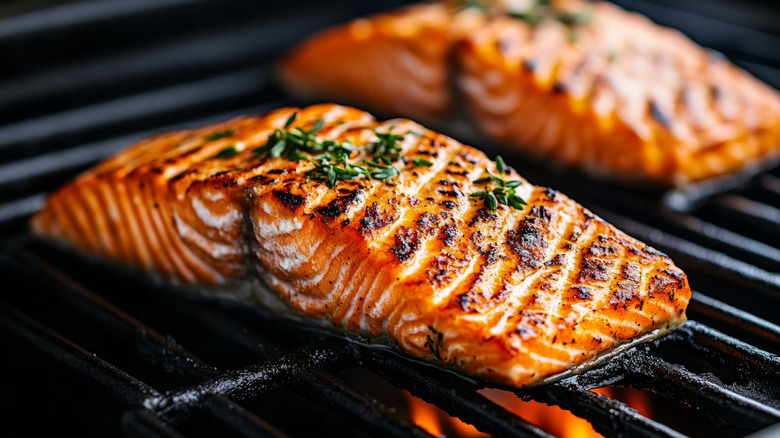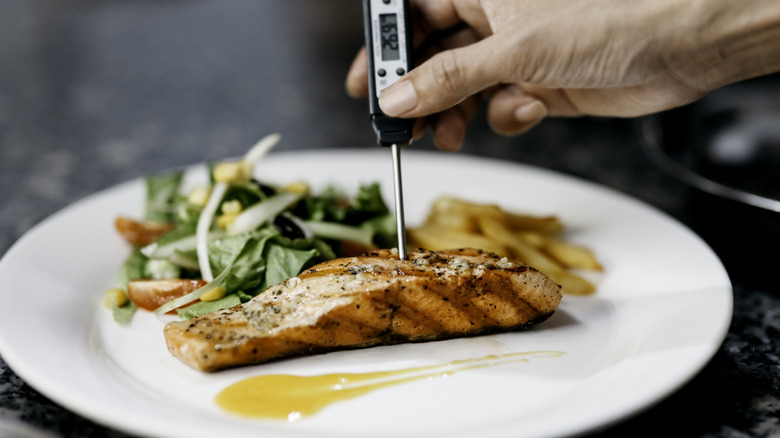If You Aren't Letting Your Salmon Rest, You Need To Start ASAP
For fellow fish lovers, salmon probably makes its way into our shopping carts fairly frequently. When cooked right, you get a perfect textural fusion of soft and flaky fish along with crispy, browned salmon skin — which is edible, by the way. But overcook your salmon, and you'll be stuck forcing each dry piece down with a gulp of water. You might already know that you shouldn't rinse your salmon before cooking, and that you can grill salmon with the skin on provided you follow some key steps. But what about letting the fish rest once it's cooked? Is that something you pay attention to every single time?
Whether you bake, fry, or grill your salmon, the temperature of the fish will carry on getting higher once you take it off the heat. This is because of what's known as carryover cooking. It essentially causes the food to continue cooking, even when you remove it from the oven, skillet, or grill.
Just as you need to rest grilled meat for a little while before slicing it, allowing the salmon to rest for at least a few minutes will let the heat spread through the fish. This ensures you're not left with a cold center, which is gross, and also potentially unsafe to eat. But, here's the catch: Since carryover cooking is doing some of the work, you need to strategically time taking your salmon off the heat so that it doesn't overcook.
Get your salmon temperature just right
Before letting your salmon rest, you'll want it to reach a certain internal temperature, which will depend on your preferences. If you're following the USDA guidelines, then your fish should be fully cooked through, and reach an internal temperature of 145 degrees Fahrenheit. While this might be your preference, don't go above this because you're guaranteed to reach the overcooked stage. Especially since the higher the heat, the more carryover cooking you'll get.
However, some people think salmon should be cooked to medium-rare or medium so it stays more tender. If that's the case, and you're cooking with wild salmon, let it reach 115 to 120 degrees Fahrenheit before removing it. The carryover heat will then cook it a few degrees more as it rests. For farmed salmon, cook it slightly higher, until it gets to 125 to 130 degrees Fahrenheit. Thicker cuts will carry on cooking more once off the heat than thin ones, so go for the lower end of the spectrum.
The best way to check the internal temperature is by inserting a thermometer stick in the thickest, middle part of the fish. If you don't have one, you can approximately gauge your salmon's temperature with a cake tester or skewer, and see how warm or hot it feels. But really, a thermometer is the only way to accurately assess exactly how it's cooked — and to know when it's time to rest the fish.

